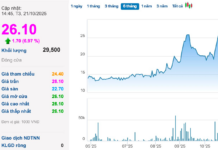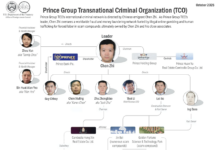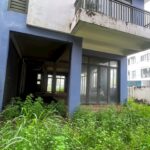Prime Minister Approves Cat Lai Tunnel Project
On December 3rd, during an inspection visit to the Long Thanh International Airport project in Dong Nai province, Prime Minister Pham Minh Chinh received reports from ministries, local authorities, and investors on transportation infrastructure projects connecting to the airport.
At the meeting, Mr. Vo Tan Duc, Chairman of the Dong Nai People’s Committee, proposed to the Prime Minister and central agencies to approve the construction of a tunnel crossing the Dong Nai River instead of the Cat Lai Bridge. This proposal aims to preserve the aesthetics of the riverbank areas and minimize the impact on the operations of Cat Lai Port.

Prime Minister Pham Minh Chinh during the working session in Dong Nai province. Photo: VGP
Prime Minister Pham Minh Chinh agreed with the proposal to build a tunnel connecting Dong Nai province and Ho Chi Minh City.
Eight years ago, the Cat Lai Bridge project, intended to replace the Cat Lai Ferry, was approved by the Prime Minister and added to the master plan for the development of Ho Chi Minh City’s transportation system up to 2020 and beyond. The bridge was designed to connect Thu Duc City (Ho Chi Minh City) and Nhon Trach district (Dong Nai province), with a length of 4.5 km and eight lanes.
The project was expected to be implemented under a public-private partnership (PPP) with a total investment of approximately VND 7,200 billion and a completion date set for 2020. However, after years of discussion, a consensus on the implementation plan could not be reached, and the Cat Lai Ferry remains the primary means of transportation.
Proposed Plans for the Cat Lai Tunnel
In a recent meeting with departments of Dong Nai province, Fecon Joint Stock Company and its partner Shanghai Tunnel Engineering Co. (STEC) proposed constructing a tunnel across the Dong Nai River instead of the Cat Lai Bridge.
According to Fecon’s representative, opting for a tunnel instead of a bridge would minimize land clearance issues and significantly reduce social impacts on the local community. Building a tunnel would also ensure uninterrupted water traffic and have no adverse effects on the existing Cat Lai Port.

Cat Lai Ferry as seen from above. Photo: Tap chi DN
Two proposed plans for the tunnel construction were presented, each featuring open tunnels on either side of the river and a closed tunnel for the river crossing. Both plans suggested constructing two parallel tunnels.
The first proposal includes eight lanes, with four lanes per tunnel and a designed speed of 80km/h. The total length of the tunnel system would exceed 2.3 km. Meanwhile, the second proposal suggests a smaller scale with six lanes, three lanes per tunnel, and a length of approximately 1.7 km.
Regarding the first proposal, Fecon’s representative mentioned the inclusion of closed and open tunnel sections, along with two shaft holes to facilitate underground construction. Similarly, the second proposal would also involve closed and open tunnel sections and shaft holes located on existing roads, namely Ly Thai To and Nguyen Thi Dinh streets. However, construction under this proposal would affect traffic on these roads.
The company representative acknowledged that the presented plans are initial concepts due to limited research time and insufficient detailed data on geology and relevant planning.
Additionally, based on preliminary research, the cost of constructing the tunnel instead of the bridge is estimated to range from VND 9,000 to 10,000 billion, and the construction time is expected to be less than two years.
The Southeast region of Vietnam is often referred to as the country’s “golden mine” for foreign investment, consistently ranking first in attracting foreign capital. As of October 31, 2024, the region has attracted over 21,000 projects with a total investment of more than USD 189 billion.
It is also the richest region in Vietnam, with an estimated state budget revenue of over VND 733,000 billion, accounting for approximately 42.2% of the country’s total revenue (an increase of 3.6% compared to the Prime Minister’s assigned estimate). Five out of six localities in the region have reported increased revenue. Exports are estimated at USD 115.7 billion, representing 31% of the country’s total exports and an increase of 11%.
Within the region, the provinces of Dong Nai and Ho Chi Minh City are among the top-performing provinces in terms of economic growth and budget revenue.
Unlocking the Gridlock: Navigating the Complex Web of TP.HCM’s Land-Entangled Projects
The HCMC Department of Natural Resources and Environment is seeking feedback on a draft decision regarding the screening, public disclosure, and cataloging of small, narrow, and encumbered state-managed land parcels, as well as the allocation and leasing of such land parcels within the city.
The New East Ho Chi Minh City Condo Launch Sets a New Price Benchmark: Foreseeably, Upcoming Projects Will Be Priced Above VND 100 Million per Square Meter
The soaring project development costs have pushed Ho Chi Minh City’s primary apartment prices to over VND 80.2 million per square meter. This has sparked a shift in the affordable condominium segment, with properties under VND 3 billion now moving to neighboring provinces that offer abundant land and lower development costs.
“Homeowner’s Surprise: A Neighborhood Mystery”
Many individuals invest billions of dollars in real estate, driven by the aspiration to secure a convenient living space and become part of a thriving, civilized community.












































